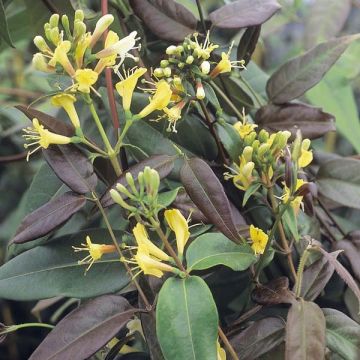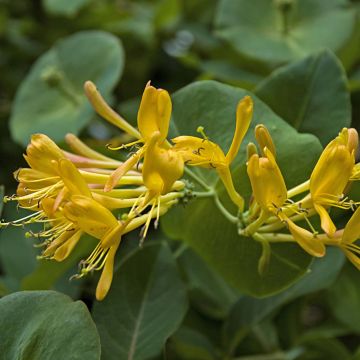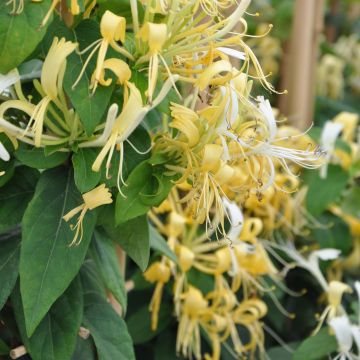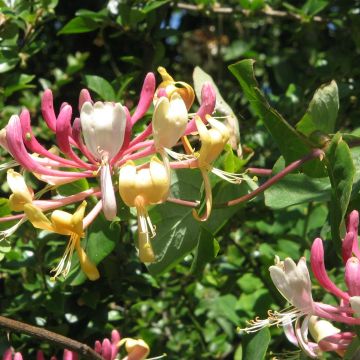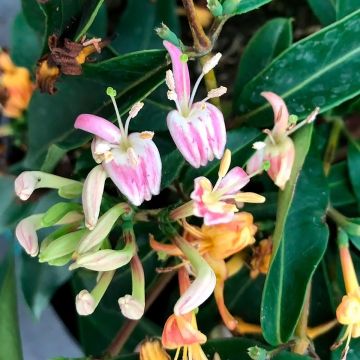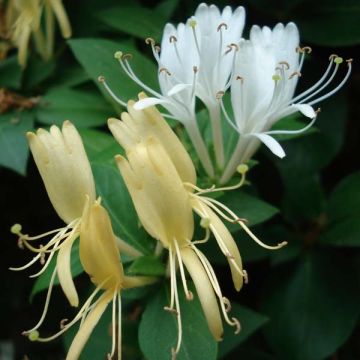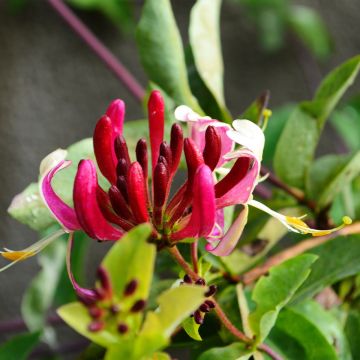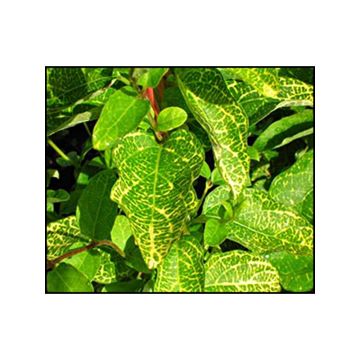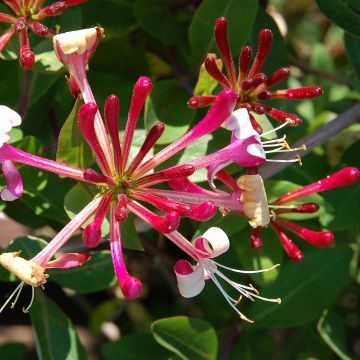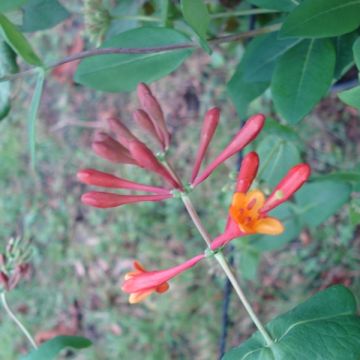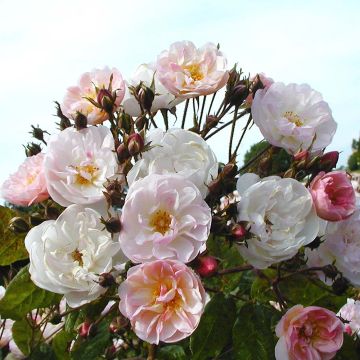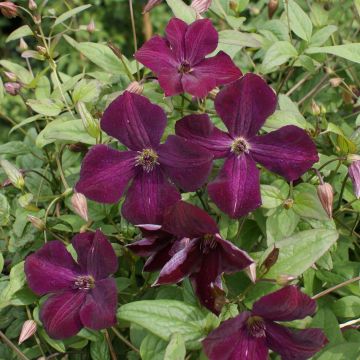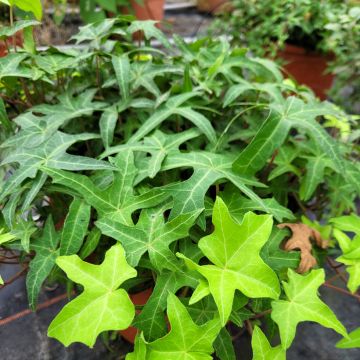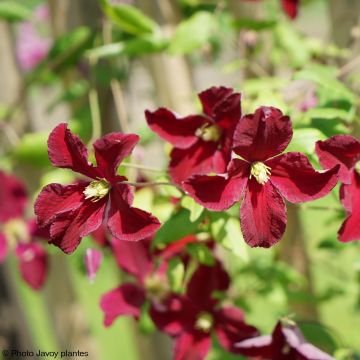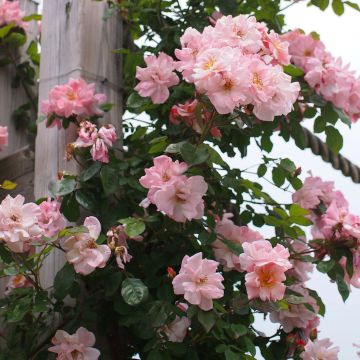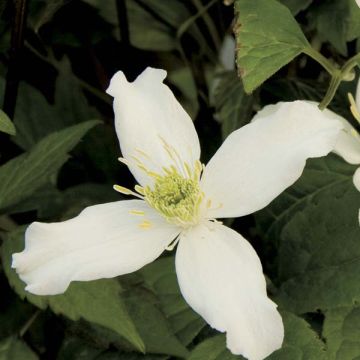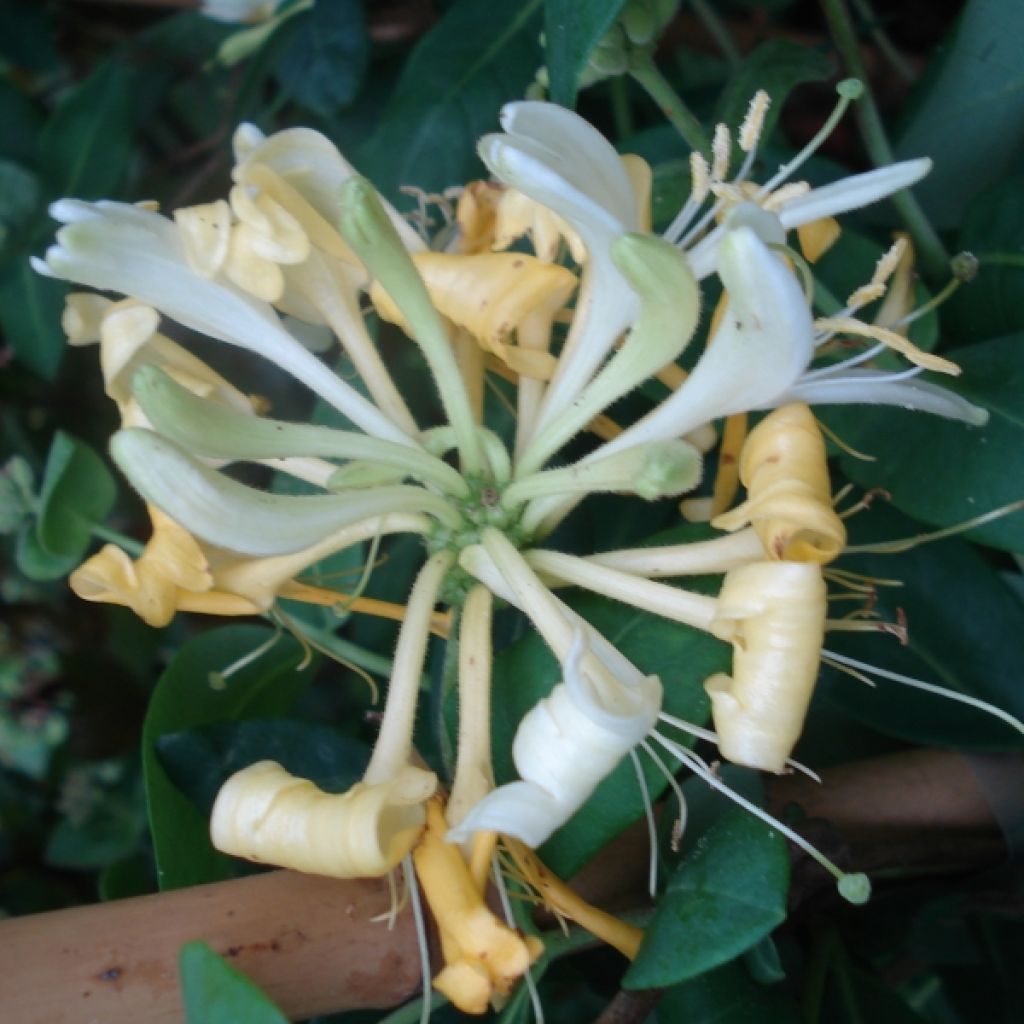

Lonicera periclymenum Scentsation - European honeysuckle
Lonicera periclymenum Scentsation - European honeysuckle
Lonicera periclymenum Scentsation
European honeysuckle, woodbine
This is the second honeysuckle I've bought this year, the first one purchased in June gave me beautiful flowers this summer, so quite delighted. Young plants in excellent condition.
Catherine, 08/10/2024
This item cannot be shipped to the selected country
Delivery charge from €5.90
Delivery to Corse prohibited
More information
Schedule delivery date,
and select date in basket
This plant carries a 6 months recovery warranty
More information
We guarantee the quality of our plants for a full growing cycle, and will replace at our expense any plant that fails to recover under normal climatic and planting conditions.
From €5.90 for pickup delivery and €6.90 for home delivery
Express home delivery from €8.90.
Delivery to Corse prohibited: UE law prohibits the import of this plant from mainland France to Corse as part of the fight against Xylella fastidiosa. Please accept our sincere apologies.
More information
Does this plant fit my garden?
Set up your Plantfit profile →
Description
The Lonicera periclymenum 'Scentsation' is a relatively recent variety of woodbine honeysuckle that will charm with its exceptionally fragrant and abundant summer flowering. From June to September-October, this tireless vine produces bouquets of initially white, then yellow flowers that perfume a whole area of the garden. Red flowers and fruits appear on the plant from July and last until late in the season. It can be easily grown in full sun or partial shade, in ordinary soil that is not too heavy, and prefers a moderately moist environment, although it can tolerate periods of moderate drought.
The Lonicera periclymenum belongs to the caprifoliaceae family. It is a very common woodbine honeysuckle in Europe, especially central Europe and up to Sweden. It can also be found in North Africa. In France, it grows spontaneously in hedges and woods, preferably on siliceous soils rich in sand and humus. It is present in almost all regions, but rare in the southeast of the country. In the wild, it develops sturdy voluble stems of 3m (10ft) or more that spontaneously wrap around neighboring shrubs and trees. This honeysuckle has given rise to numerous cultivars, including 'Scentsation', selected for the abundance and fragrance of its flowers, as well as its more compact habit. It was elected "Climbing Plant of the Year 2016" at the Horticultural Rendez-vous in Montreal.
The 'Scentsation' honeysuckle does not exceed 2 to 3 m (7 to 10ft) in height. Its robust stems bear leathery foliage, of a slightly glaucous medium green, which persists more or less in winter. Its tubular flowers form at the ends of the current year's shoots, gathered in generously fragrant bouquets. Highly visited by pollinating insects, they are followed by the formation of highly decorative bright red berries, highlighted by cream-coloured flower buds and yellow and white flowers that continue to bloom until September, in successive waves. The fruits are highly appreciated by birds. The leaves are arranged in pairs on vigorous woody stems. This non-invasive variety will adapt to a wide range of soils, as long as they are properly drained.
'Scentsation' will be superb trained against a wall, on a trellis or fence, on an arch or pergola, preferably near the terrace, the entrance of the house or a French window to fully enjoy its fragrance, particularly intoxicating in the evening. It can also make a good ground cover in a wild corner of the garden or be grown in a container on a terrace or balcony. It pairs well with small viticella group clematis, which are not demanding and flower at the same time. It can also be trained to climb on shrubs with simultaneous flowering (butterfly bushes, climbing or shrub roses, deciduous ceanothus) or staggered flowering (Japanese quince, Abeliophyllum, white spring spireas).
Report an error about the product description
Lonicera periclymenum Scentsation - European honeysuckle in pictures
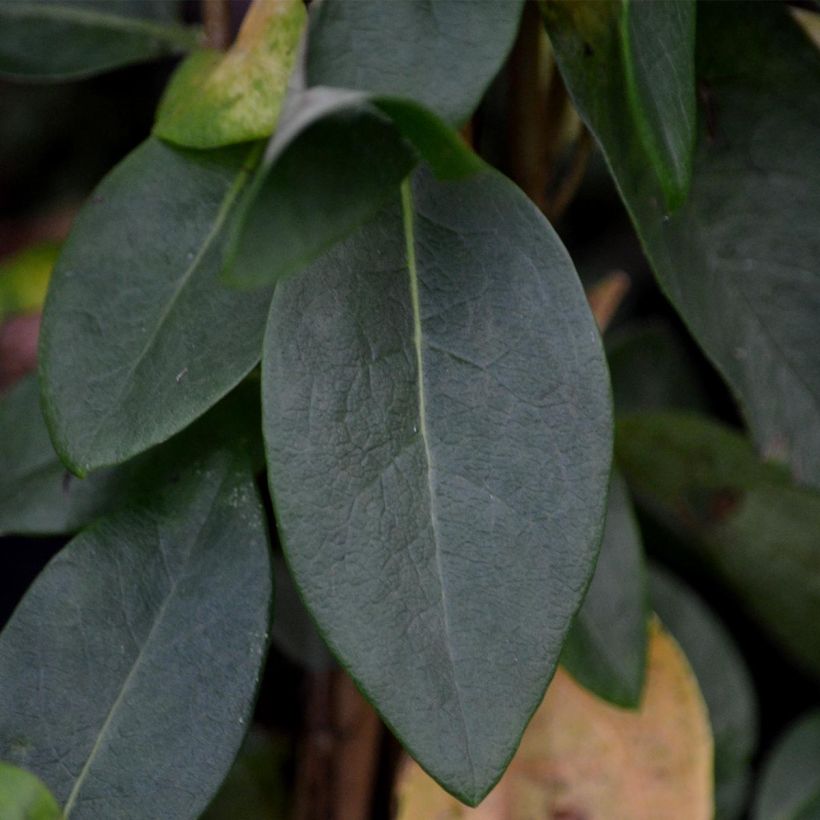

Plant habit
Flowering
Foliage
Botanical data
Lonicera
periclymenum
Scentsation
Caprifoliaceae
European honeysuckle, woodbine
Cultivar or hybrid
Other Honeysuckle
Planting and care
Planting period
Intended location
Care
-
, onOrder confirmed
Reply from on Promesse de fleurs
Foolproof climbers
Haven't found what you were looking for?
Hardiness is the lowest winter temperature a plant can endure without suffering serious damage or even dying. However, hardiness is affected by location (a sheltered area, such as a patio), protection (winter cover) and soil type (hardiness is improved by well-drained soil).

Photo Sharing Terms & Conditions
In order to encourage gardeners to interact and share their experiences, Promesse de fleurs offers various media enabling content to be uploaded onto its Site - in particular via the ‘Photo sharing’ module.
The User agrees to refrain from:
- Posting any content that is illegal, prejudicial, insulting, racist, inciteful to hatred, revisionist, contrary to public decency, that infringes on privacy or on the privacy rights of third parties, in particular the publicity rights of persons and goods, intellectual property rights, or the right to privacy.
- Submitting content on behalf of a third party;
- Impersonate the identity of a third party and/or publish any personal information about a third party;
In general, the User undertakes to refrain from any unethical behaviour.
All Content (in particular text, comments, files, images, photos, videos, creative works, etc.), which may be subject to property or intellectual property rights, image or other private rights, shall remain the property of the User, subject to the limited rights granted by the terms of the licence granted by Promesse de fleurs as stated below. Users are at liberty to publish or not to publish such Content on the Site, notably via the ‘Photo Sharing’ facility, and accept that this Content shall be made public and freely accessible, notably on the Internet.
Users further acknowledge, undertake to have ,and guarantee that they hold all necessary rights and permissions to publish such material on the Site, in particular with regard to the legislation in force pertaining to any privacy, property, intellectual property, image, or contractual rights, or rights of any other nature. By publishing such Content on the Site, Users acknowledge accepting full liability as publishers of the Content within the meaning of the law, and grant Promesse de fleurs, free of charge, an inclusive, worldwide licence for the said Content for the entire duration of its publication, including all reproduction, representation, up/downloading, displaying, performing, transmission, and storage rights.
Users also grant permission for their name to be linked to the Content and accept that this link may not always be made available.
By engaging in posting material, Users consent to their Content becoming automatically accessible on the Internet, in particular on other sites and/or blogs and/or web pages of the Promesse de fleurs site, including in particular social pages and the Promesse de fleurs catalogue.
Users may secure the removal of entrusted content free of charge by issuing a simple request via our contact form.
The flowering period indicated on our website applies to countries and regions located in USDA zone 8 (France, the United Kingdom, Ireland, the Netherlands, etc.)
It will vary according to where you live:
- In zones 9 to 10 (Italy, Spain, Greece, etc.), flowering will occur about 2 to 4 weeks earlier.
- In zones 6 to 7 (Germany, Poland, Slovenia, and lower mountainous regions), flowering will be delayed by 2 to 3 weeks.
- In zone 5 (Central Europe, Scandinavia), blooming will be delayed by 3 to 5 weeks.
In temperate climates, pruning of spring-flowering shrubs (forsythia, spireas, etc.) should be done just after flowering.
Pruning of summer-flowering shrubs (Indian Lilac, Perovskia, etc.) can be done in winter or spring.
In cold regions as well as with frost-sensitive plants, avoid pruning too early when severe frosts may still occur.
The planting period indicated on our website applies to countries and regions located in USDA zone 8 (France, United Kingdom, Ireland, Netherlands).
It will vary according to where you live:
- In Mediterranean zones (Marseille, Madrid, Milan, etc.), autumn and winter are the best planting periods.
- In continental zones (Strasbourg, Munich, Vienna, etc.), delay planting by 2 to 3 weeks in spring and bring it forward by 2 to 4 weeks in autumn.
- In mountainous regions (the Alps, Pyrenees, Carpathians, etc.), it is best to plant in late spring (May-June) or late summer (August-September).
The harvesting period indicated on our website applies to countries and regions in USDA zone 8 (France, England, Ireland, the Netherlands).
In colder areas (Scandinavia, Poland, Austria...) fruit and vegetable harvests are likely to be delayed by 3-4 weeks.
In warmer areas (Italy, Spain, Greece, etc.), harvesting will probably take place earlier, depending on weather conditions.
The sowing periods indicated on our website apply to countries and regions within USDA Zone 8 (France, UK, Ireland, Netherlands).
In colder areas (Scandinavia, Poland, Austria...), delay any outdoor sowing by 3-4 weeks, or sow under glass.
In warmer climes (Italy, Spain, Greece, etc.), bring outdoor sowing forward by a few weeks.

































